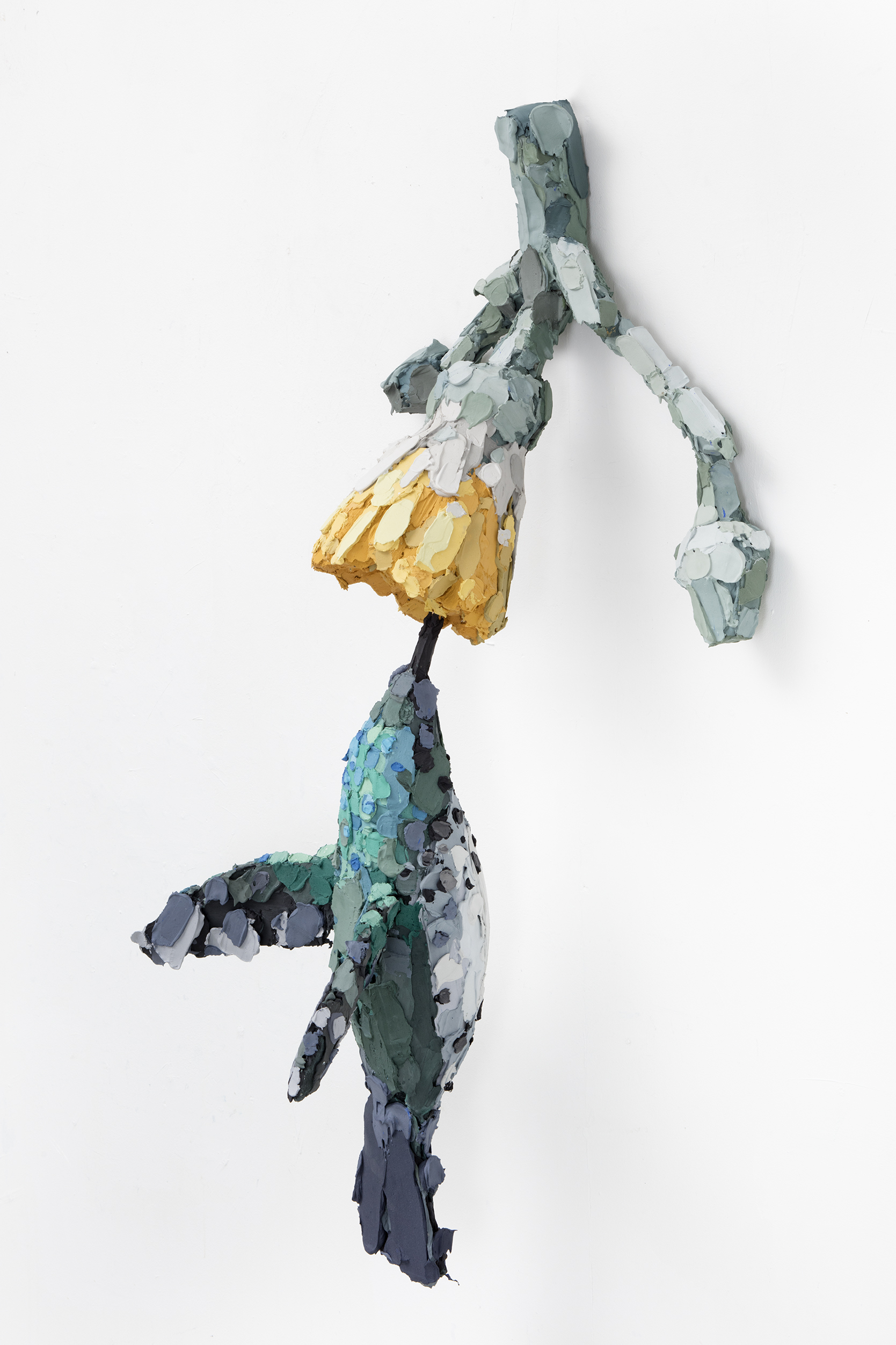 Pollination (Firecrown and Cabbage tree )
Pollination (Firecrown and Cabbage tree )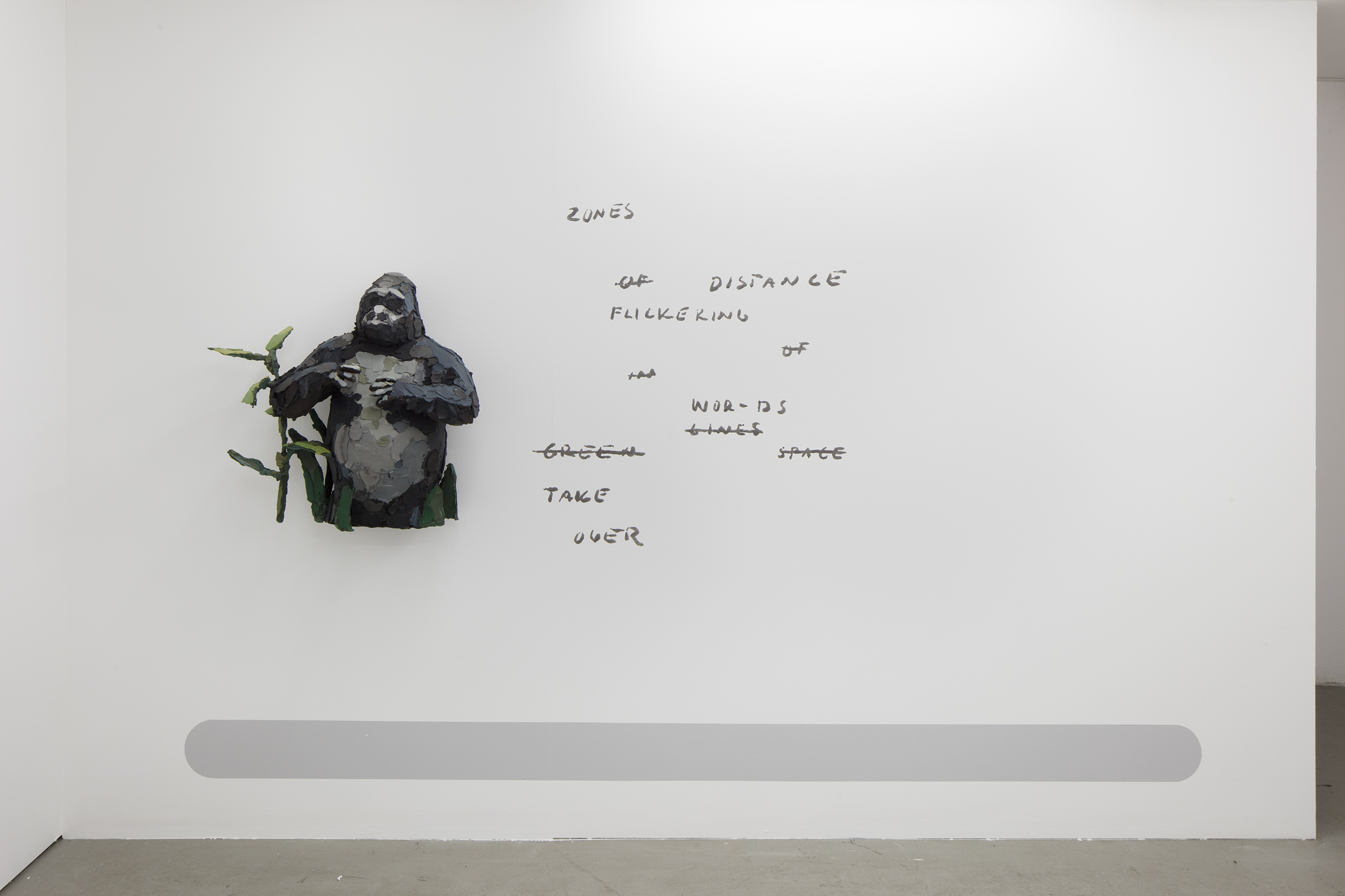
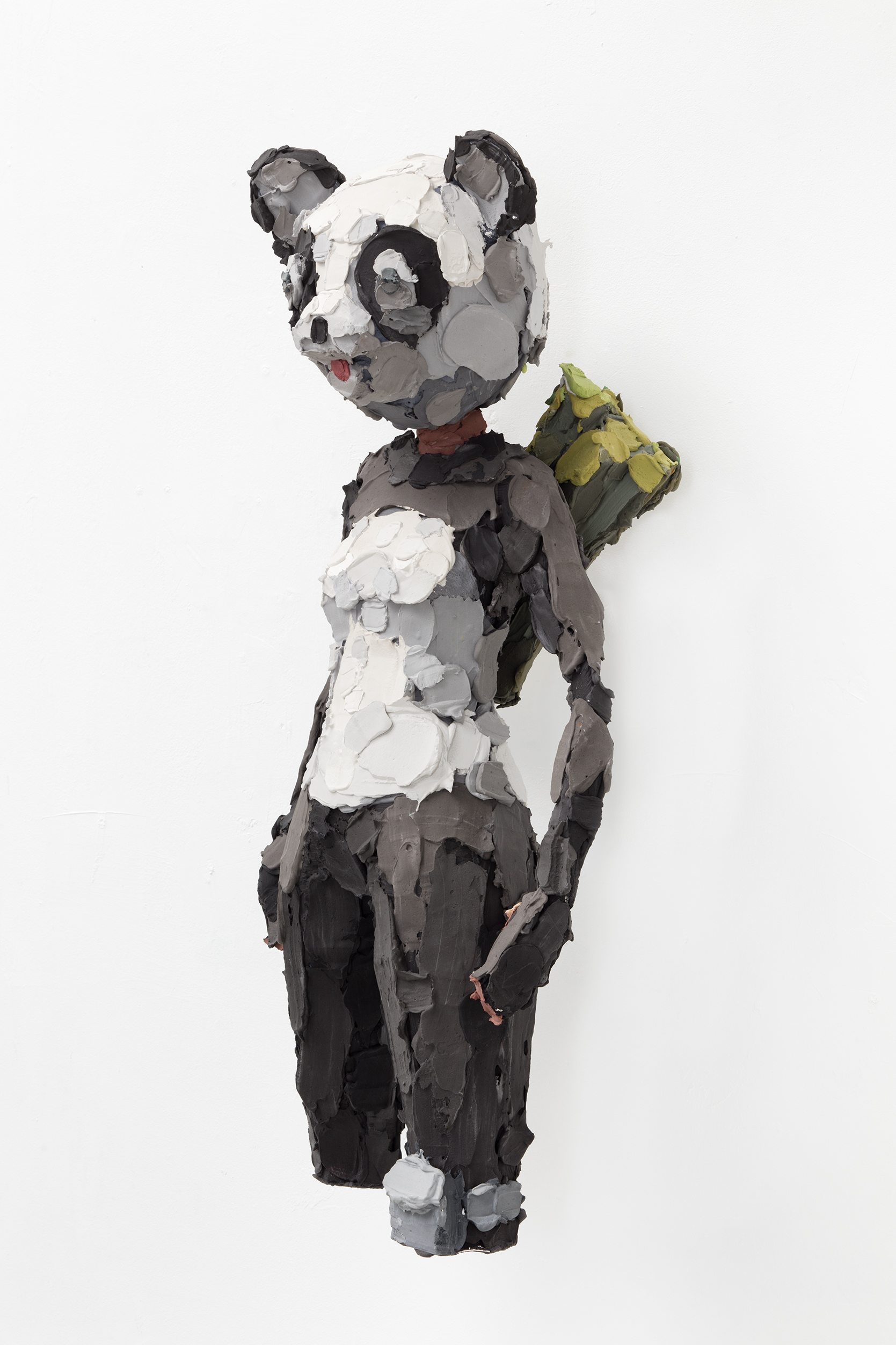 Skin (P.A.N.D.A team leader)
Skin (P.A.N.D.A team leader)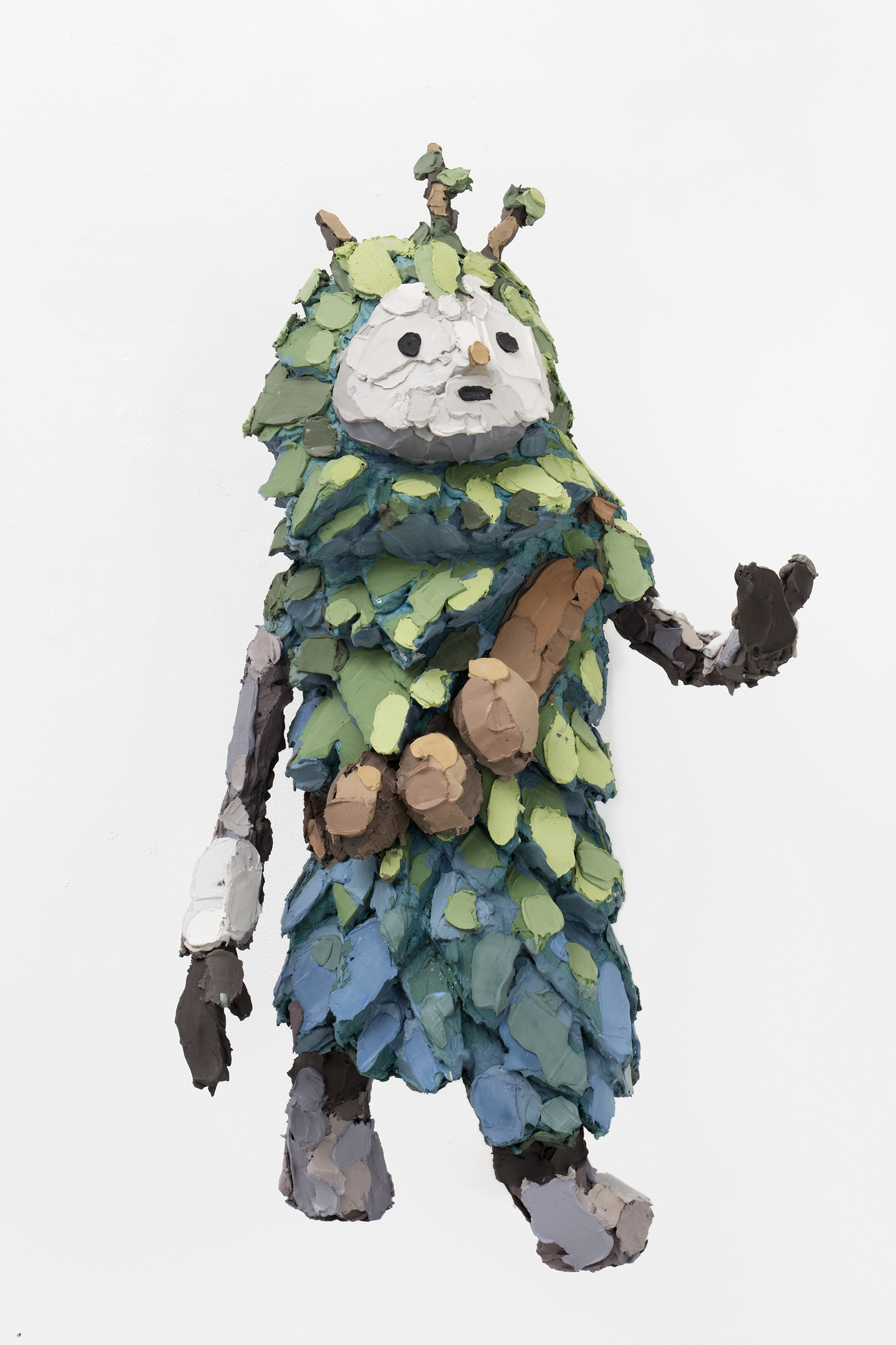 Skin (Bushranger)
Skin (Bushranger)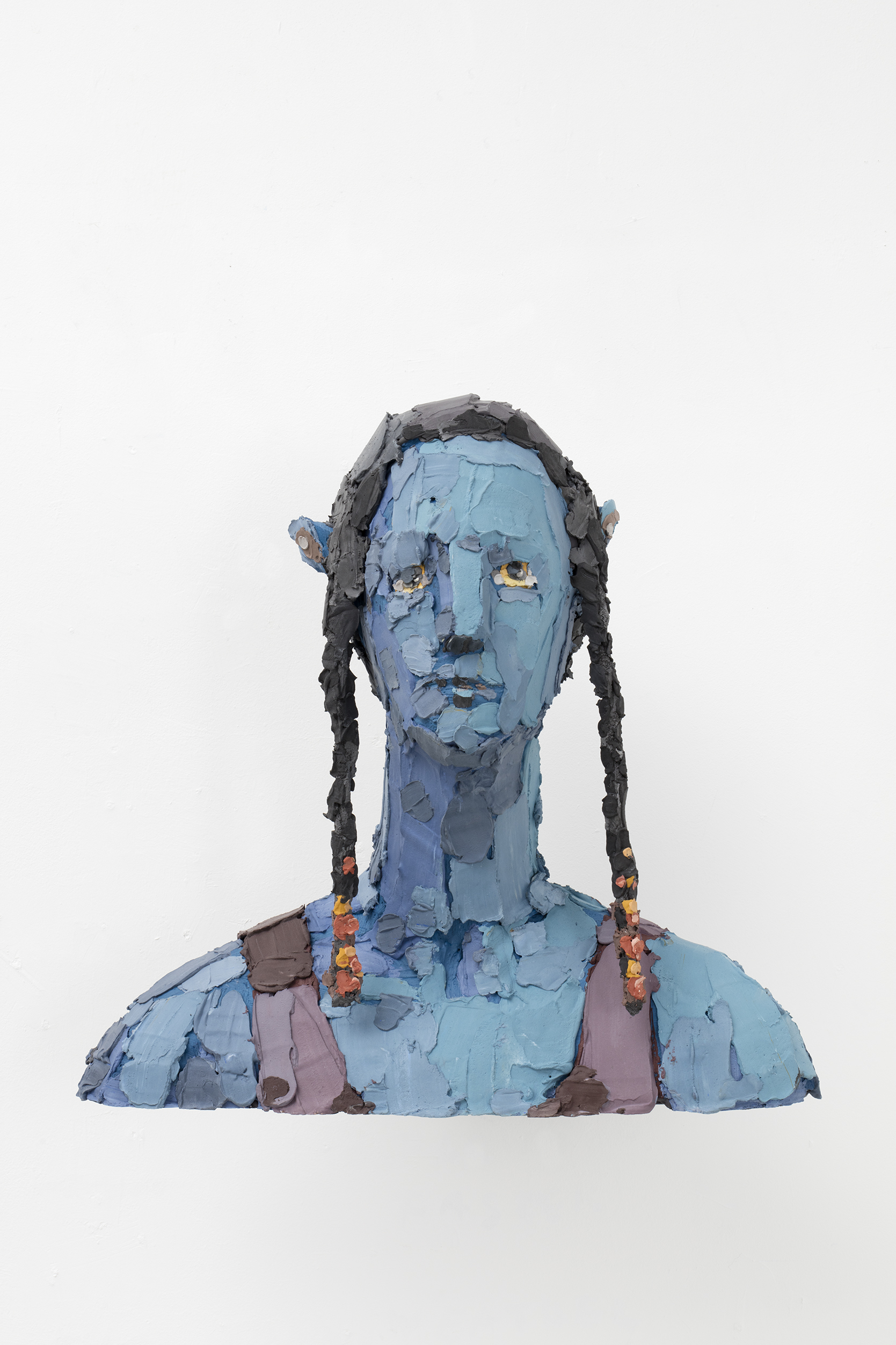 Grace
Grace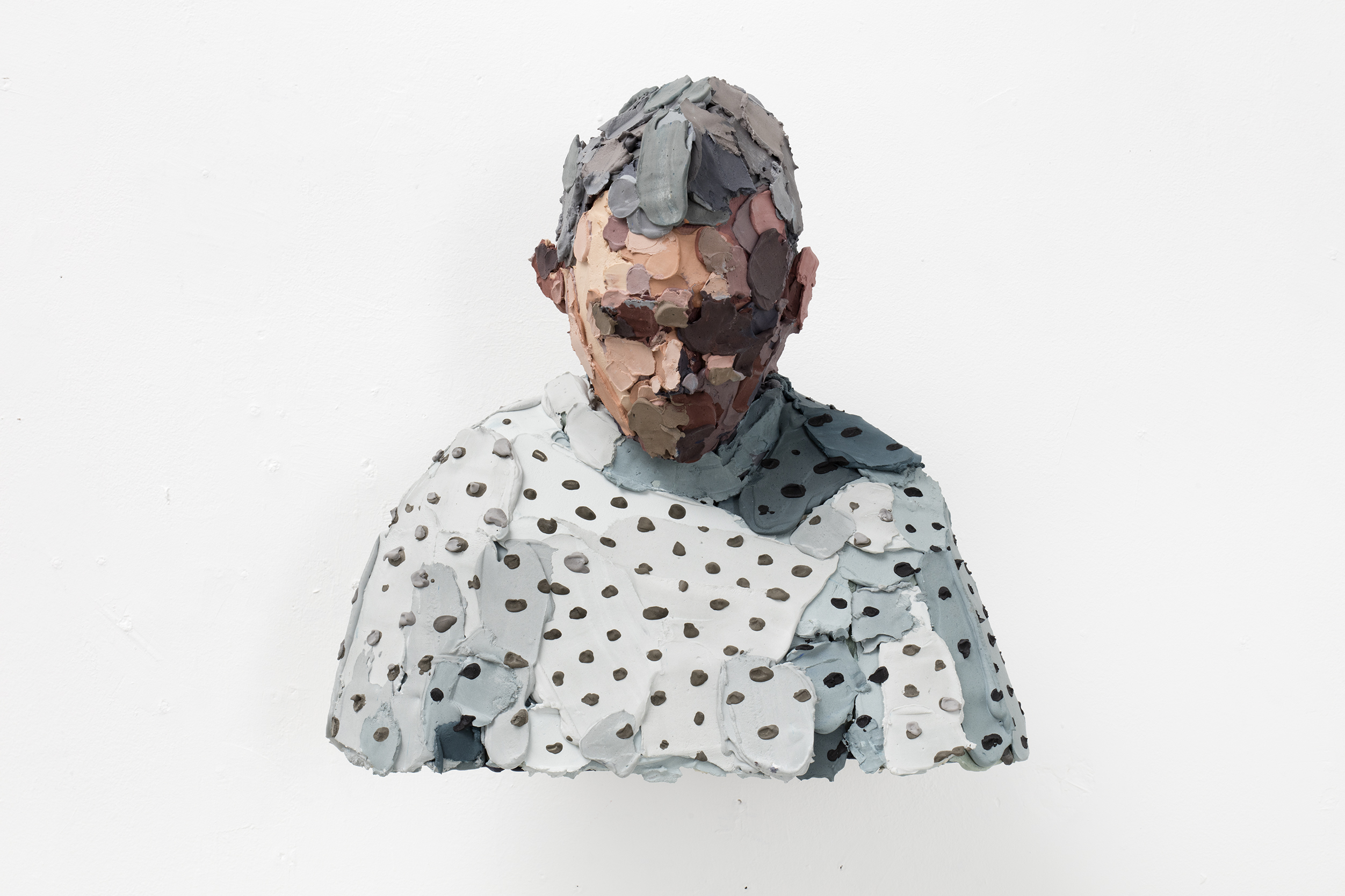 Linkola
Linkola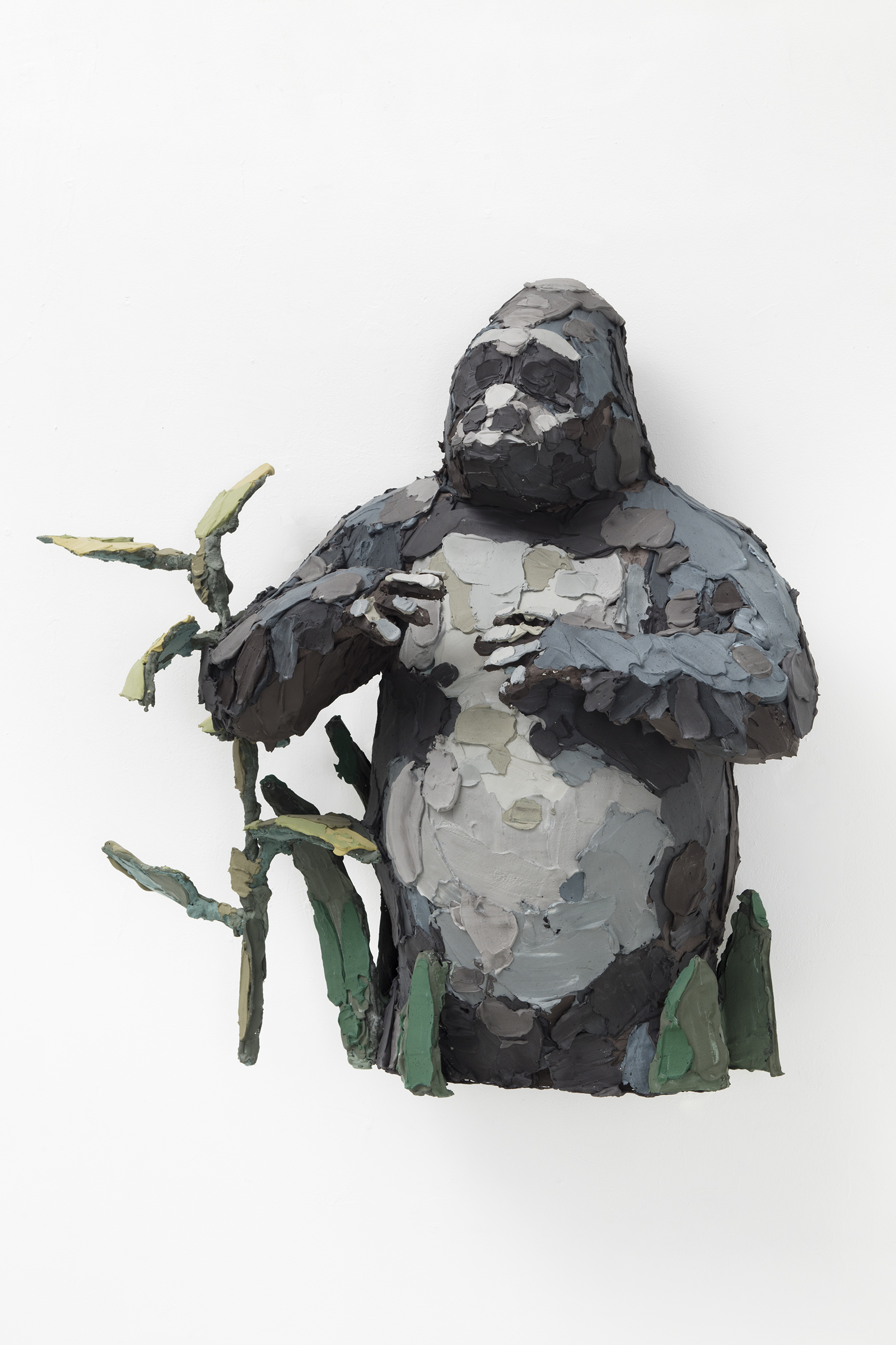 Beethoven
Beethoven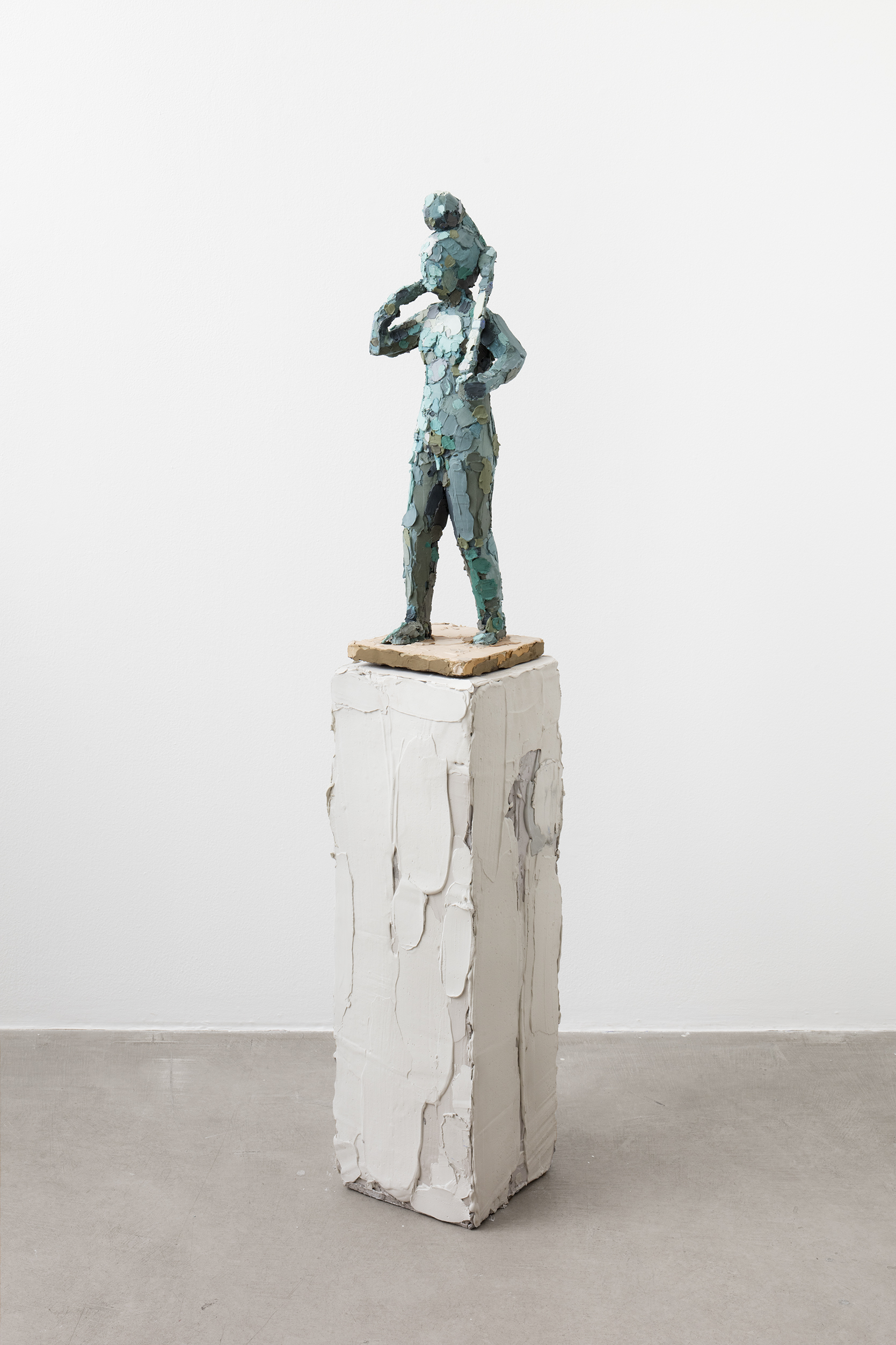 Hermaphroditus
Hermaphroditus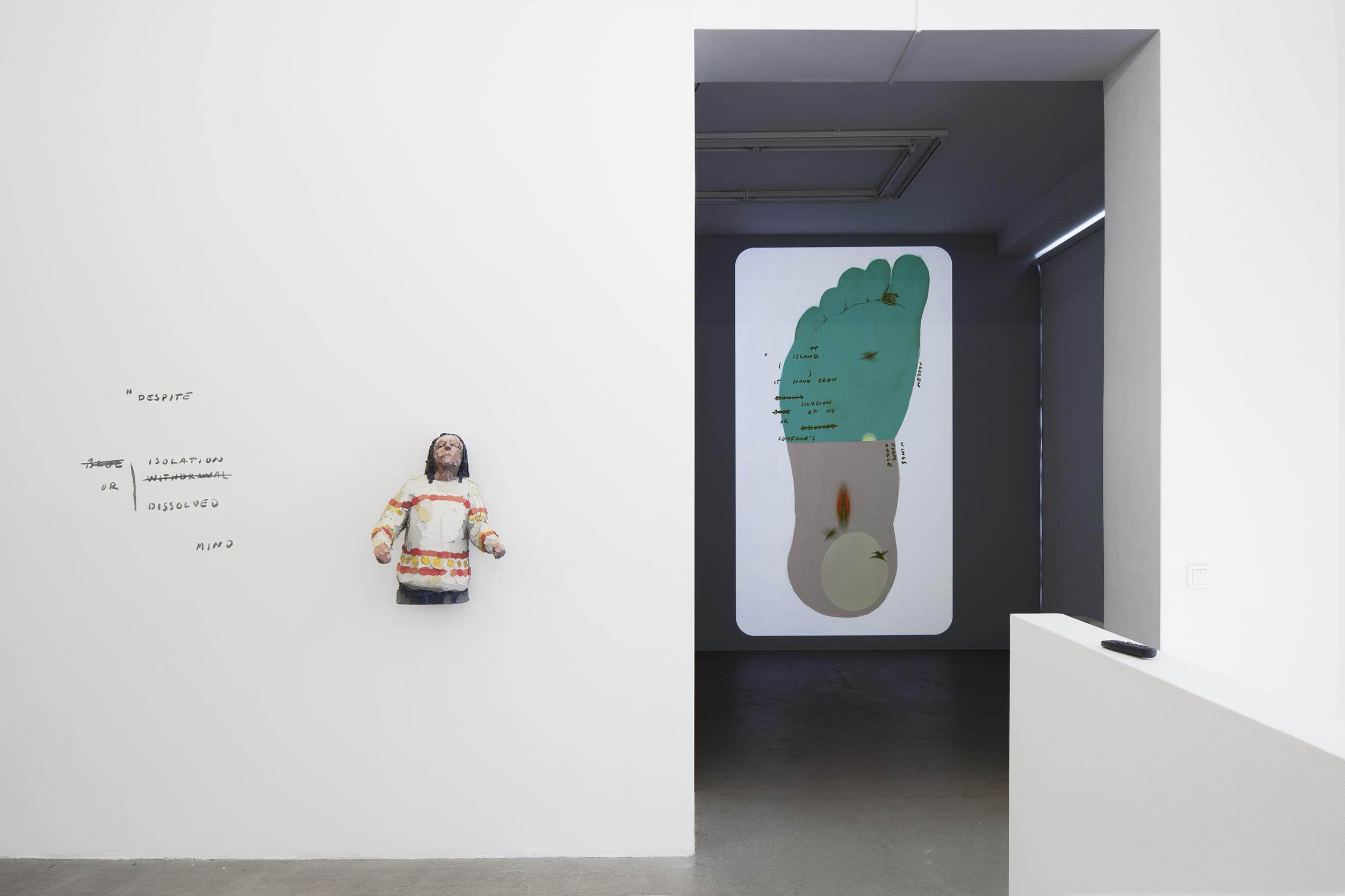
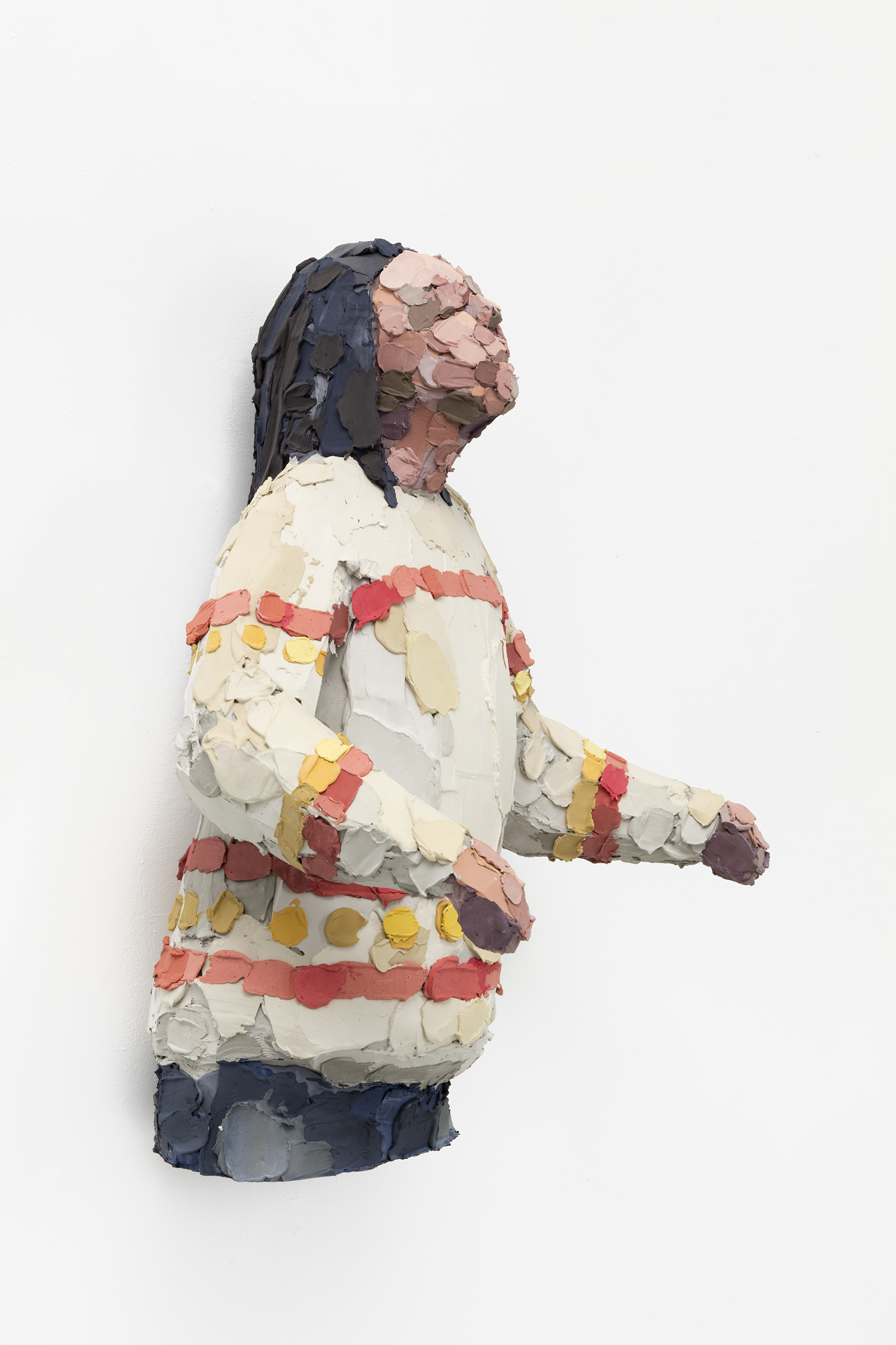 Trance
Trance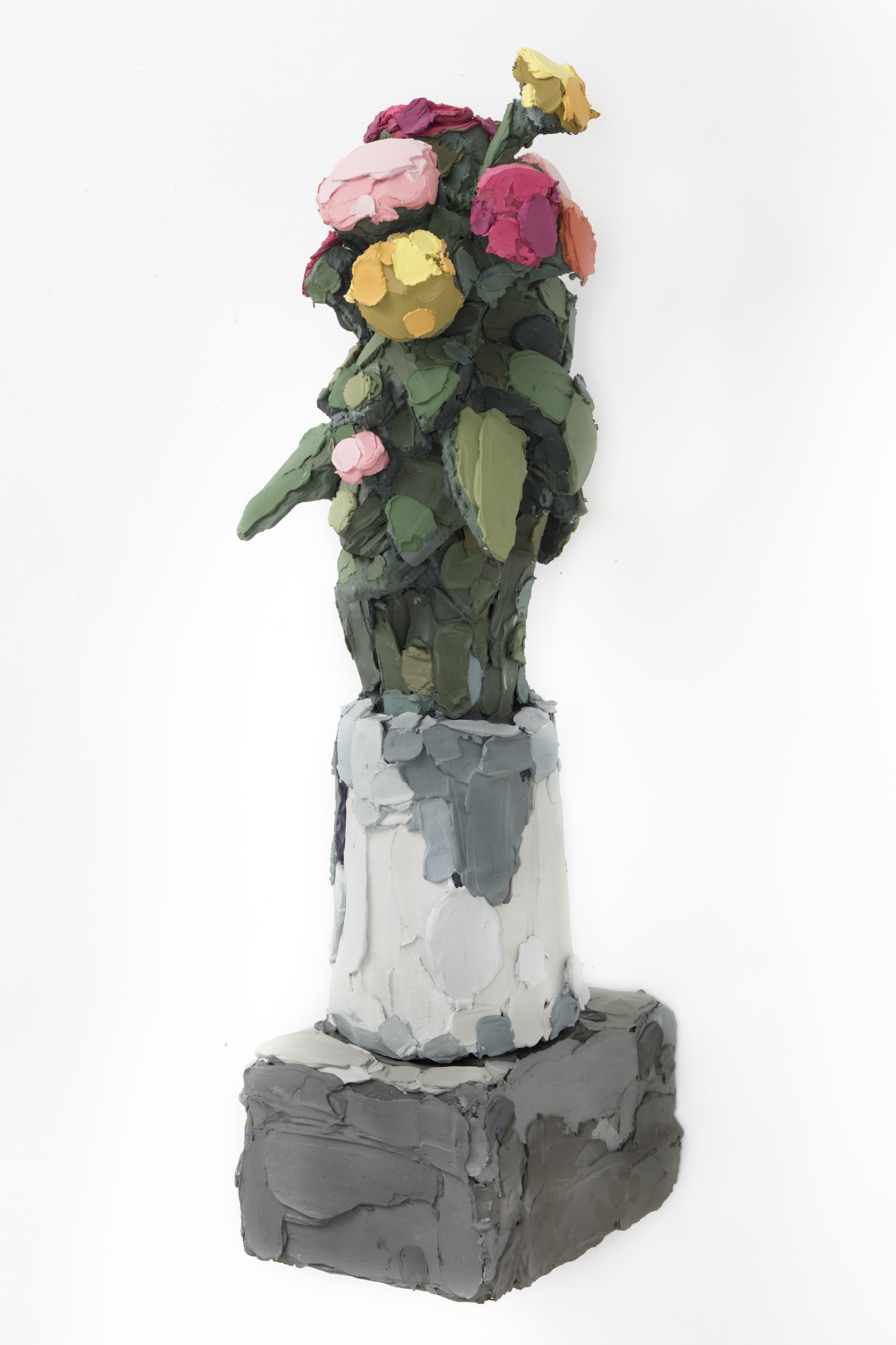 Flowers for Cats
Flowers for Cats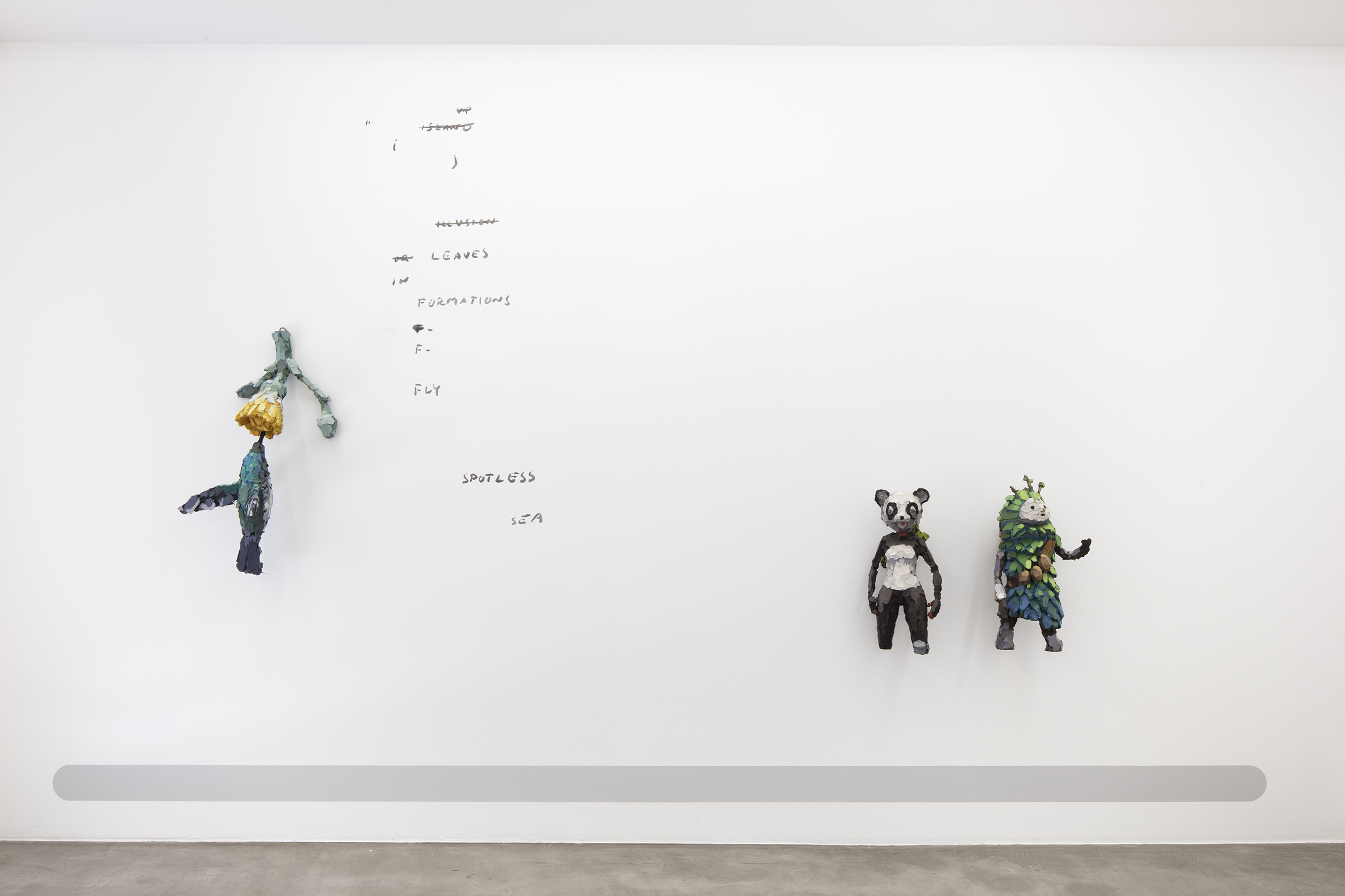
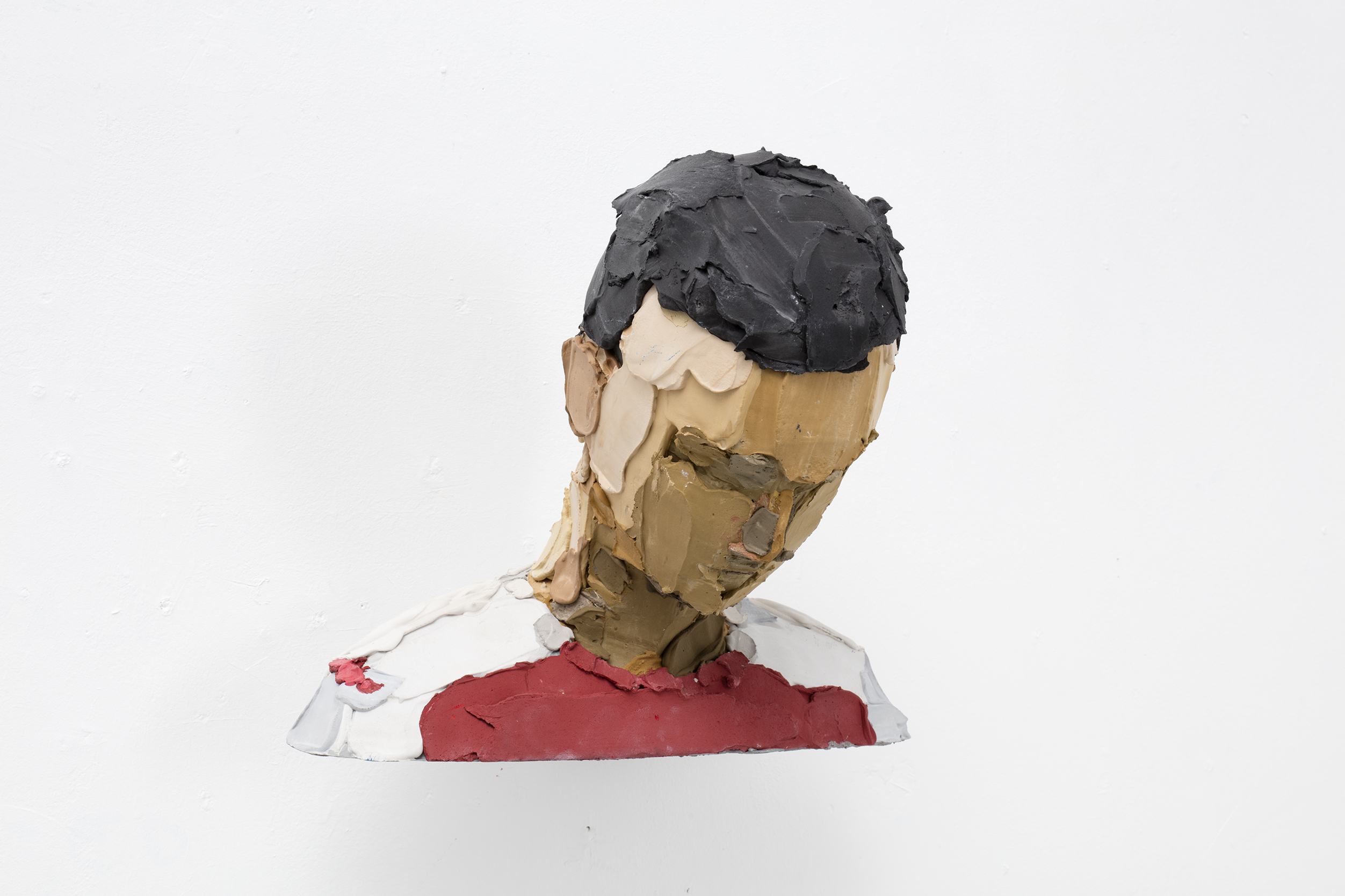 Mesut Prays
Mesut Prays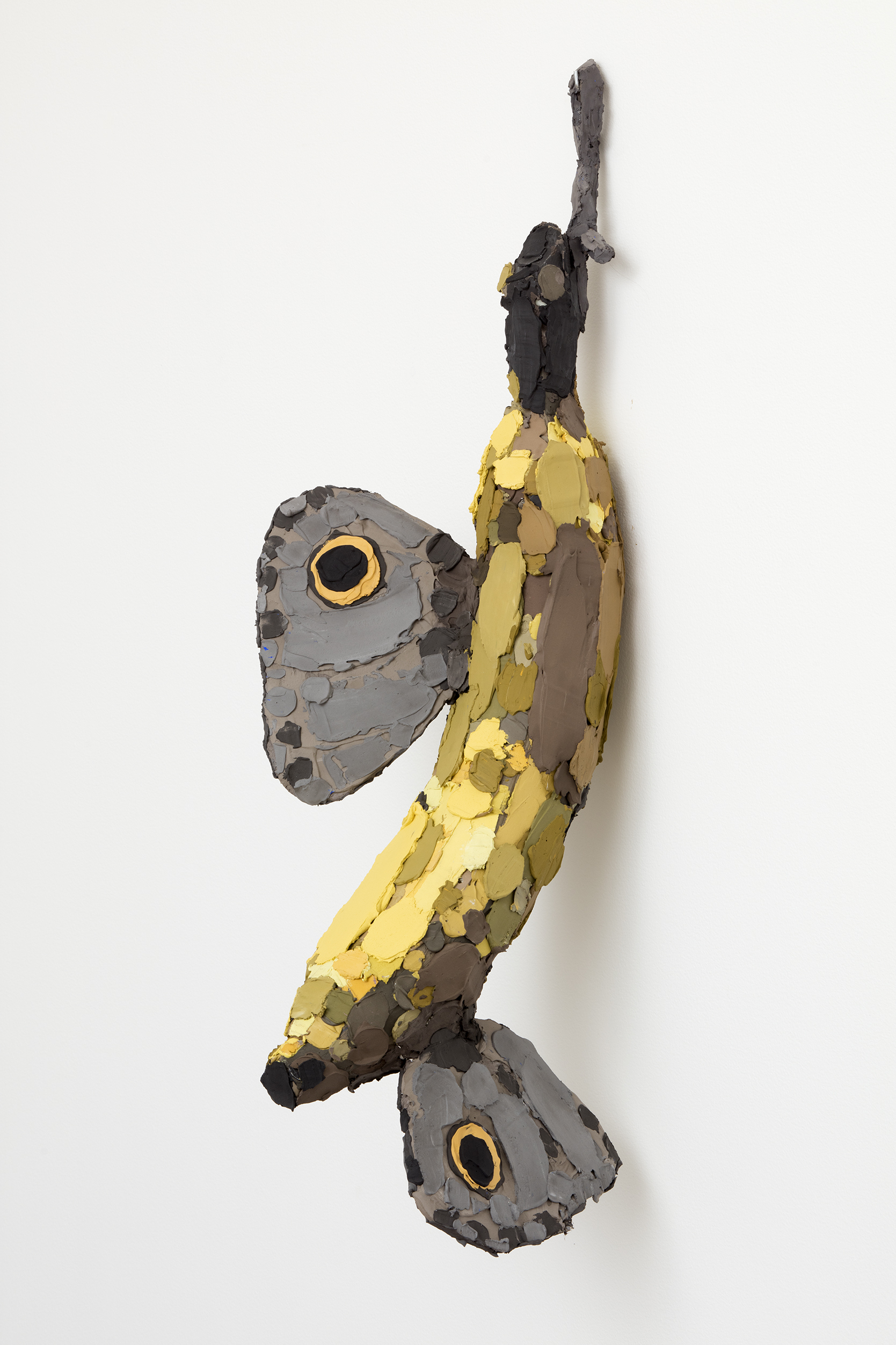 Bait
Bait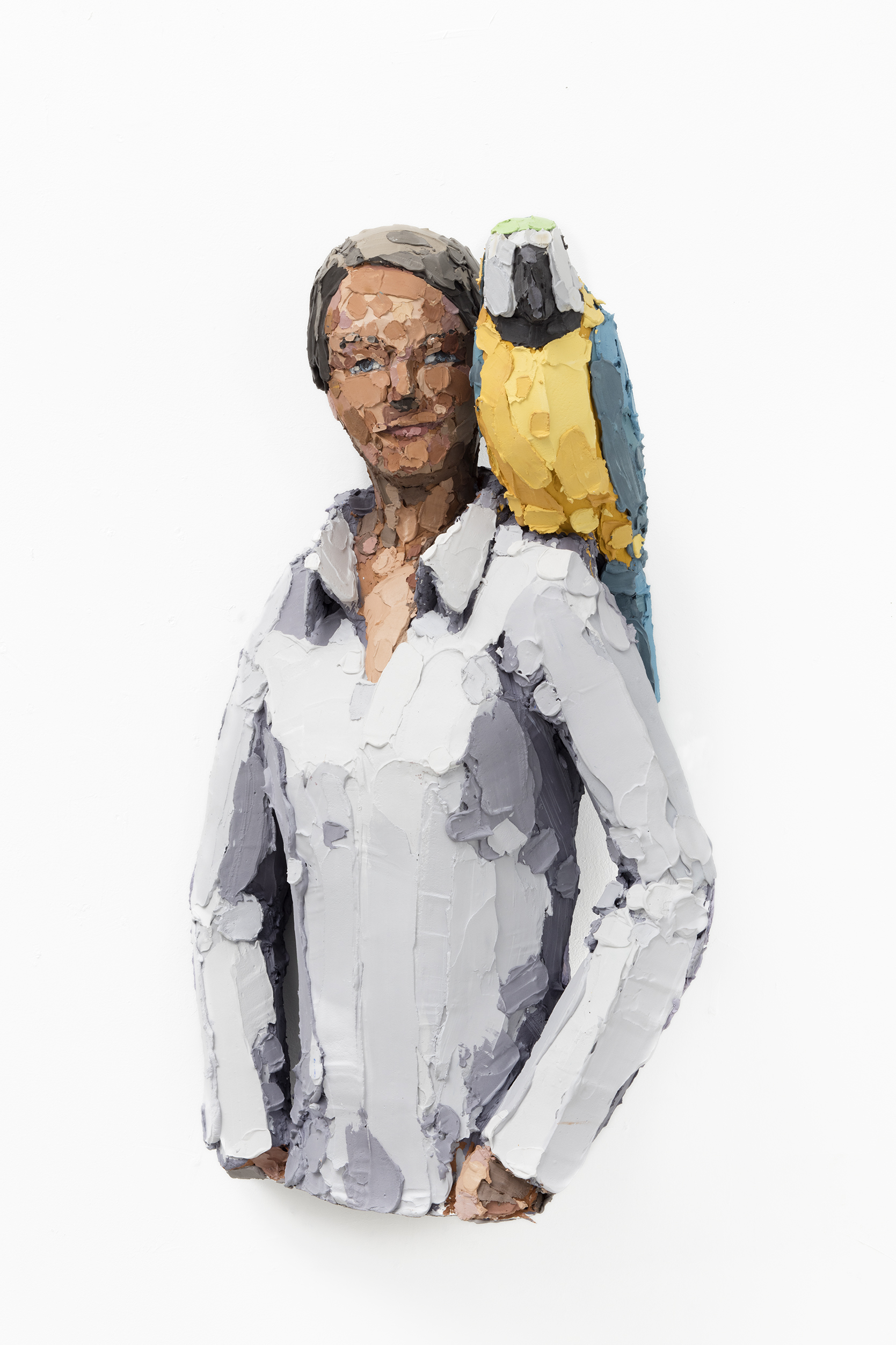 Parrot Sitting on Woman's Shoulder
Parrot Sitting on Woman's Shoulder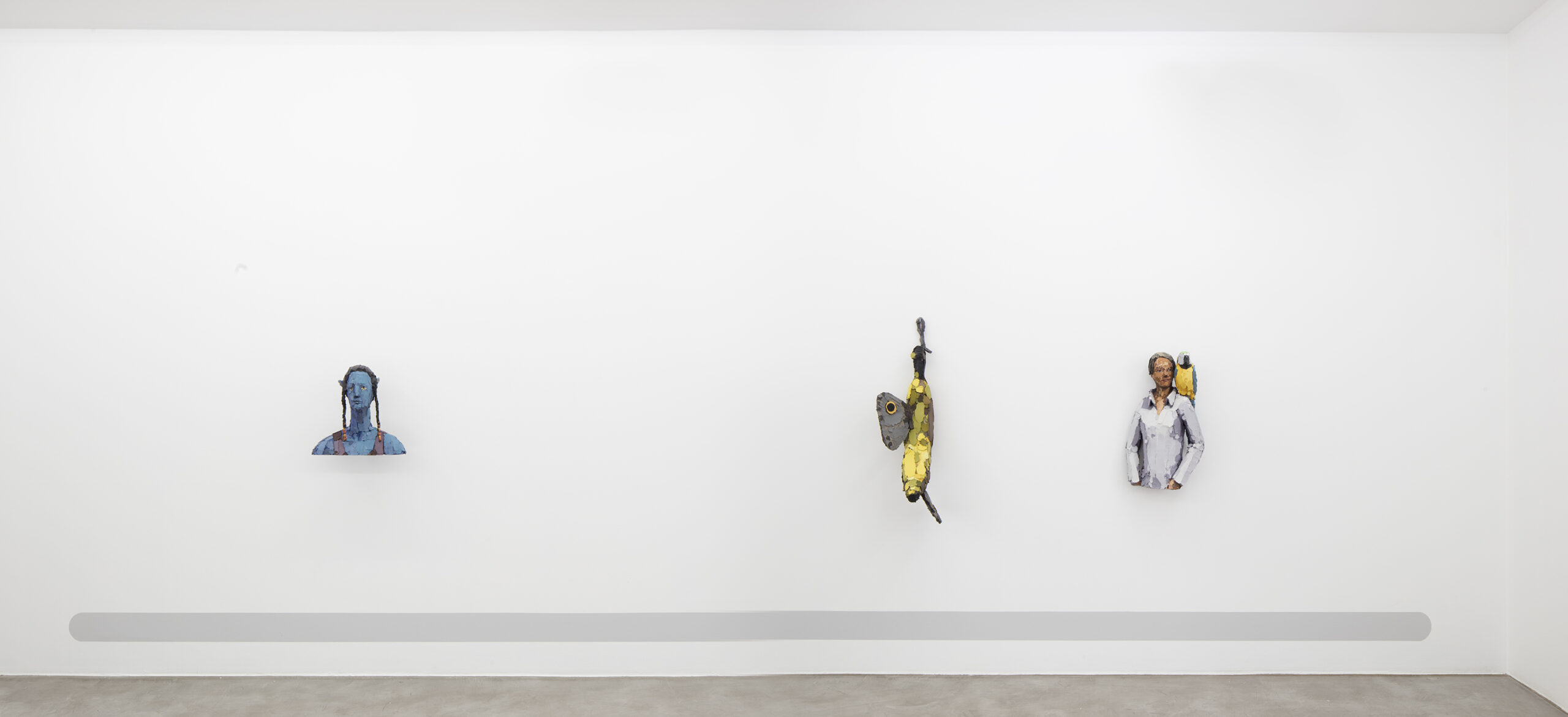
Lions Eat Grass
Galerie Anhava 2021
Sculptures made of dyed plaster, animated drawings and texts on walls.
Vesa-Pekka Rannikko’s (b. 1968) new works see him return to figurative expression and characters that were last seen from him a decade ago. Lions Eat Grass is an exhibition about escapism, concrete fantasies, identities, and artificial paradises, which are presented to us through plaster sculptures and animated drawings. The exhibition provides an investigation into a person construing the world while assuming a multitude of different roles in it.
Rannikko’s sculptures are reminiscent of paintings. He creates them by building layers of colour and using the trowel like a brush. Rannikko refers to his own works as “lying sculptures” because of the conflicting experience they evoke by producing a mixture of two- and three-dimensional sensations. This results in dialogues between embodied perception and illusion. The dissonance raises questions about the work’s relationship to reality, its topic, and the linguistic nature of vision.
Individual sculptures and animations form larger entities in the gallery space, where their blurred proportions, scene-like, stagy nature, and allusions to digital environments create meanings between the works and the audience, and between the works themselves. Set against what might be called frameless portraits, the animations create confined, changing windows into another reality. Sketch-like drawing and writing become combined in the stop motion images, where they form an organic, reactive, and associative whole.
Rannikko is fascinated by the fragmented nature of narrative structure, various types of mediums, and the simultaneity of different kinds of texts. The themes of the exhibition arise from various sources, such as science fiction, 18th century descriptions of paradise, Fortnite online game, dramatized nature documentaries, and stock photos from the internet. Almost all of the works are based on digital materials – a text or a picture of something whose purpose is to express, describe or illustrate.
In the exhibition, identities and narratives become intertwined in layers; they form a paradise that is not the untamed nature, but a constructed garden, artificial utopia, personal haven, ecological fantasy, exploitable natural resource, or ecstatic condition. A paradise where lions eat grass, and the virtual appearance creates a sense of unity.
Oona Latto
